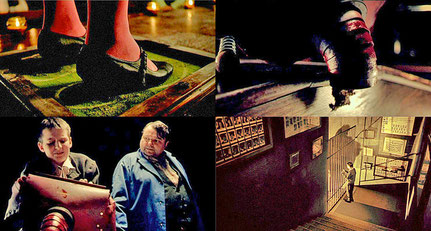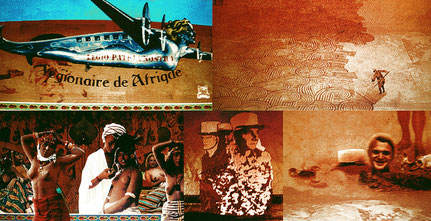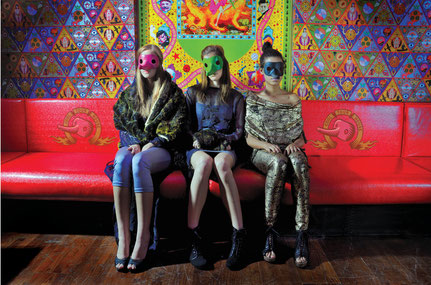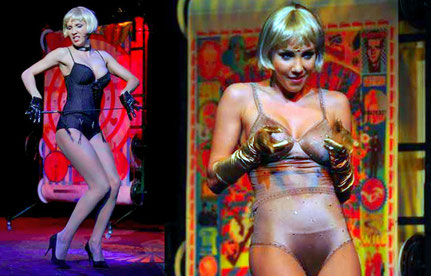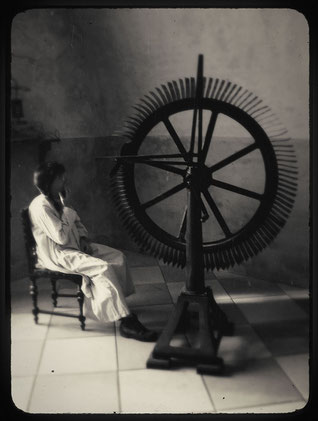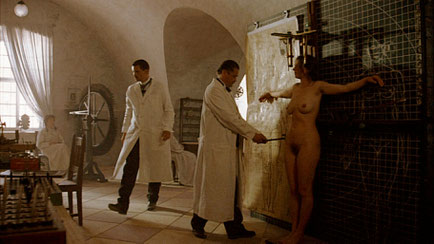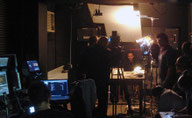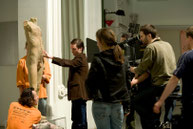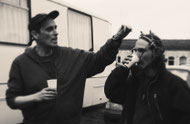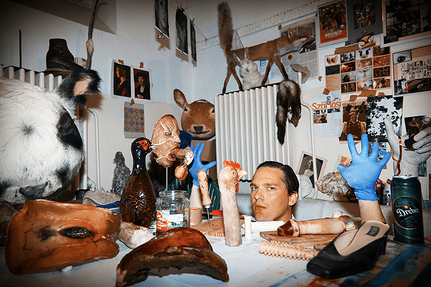Opium
Diary of a Madwoman a feature film by János Szász
Art direction, concept art, props design
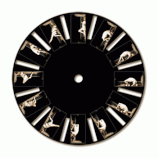
Toldi
a feature film plan by György Pálfi
Concept art
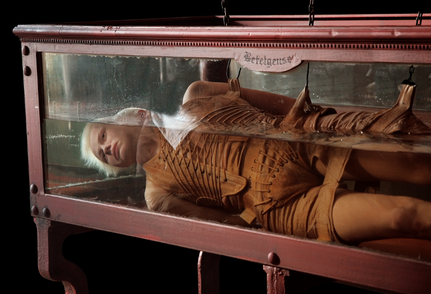
The Art Book
Taxidermia
a feature film by György Pálfi
Concept art and design
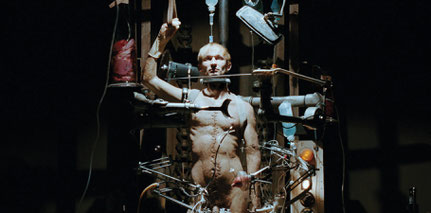

Scock
a short film by Gerő Marcell
Production design
Awards: 38. Sehsuechte Festival 2009, Podsdam
39. Hungarian filmweek, Budapest
In festival: Breaking Grounds – Go Short 2009, Nijmegen
31 Rencontres Henry Langlois, Poitiers
9. Sleepwalkers Festival, Tallin
Goldeneye Cinematography Festival, Budapest, 2007
Still life...
a short film by Natália Jánossy


Hungary 2010
a short film by György Pálfi
Bone Brigade
Exostra - interactive installation, 2006
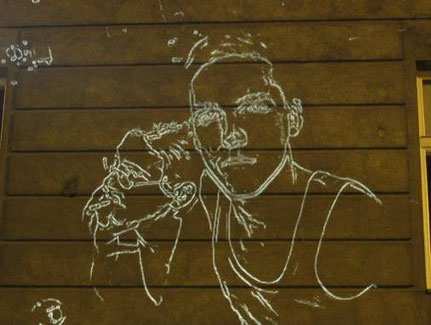
The project is an attempt to find an artistic use to the web video conference program. The viewers at the two different locations can influence the online „broadcasted” picture of them with their physical presence and activity. The Exostra project is an innovative cooperation between experts from different fields; it is based on the work of artists, programmers and engineers.
Nowadays people can make video conferences at different points of the world with the help of technology. A group of Hungarian artists called Vizuális Művek came up with the idea to create a way to make people feel each other through a brand new video-conference system. The Intelligent Space concept was used as the technological background.
Programing by Péter Szemes, Grégory Audureau, Béla Takarics, Péter Korondi, Budapest University of Technology and Economics
Concept: Krisztián Zana, Géza Szöllősi, Balázs Takács, Gábor Thébesz, Kristóf Murányi
Szikra Bar
Bridge of Sighs
a feature film by János Szász
Concept art
Sziget festival

Installation for "Sziget Festival", Budapest 2000
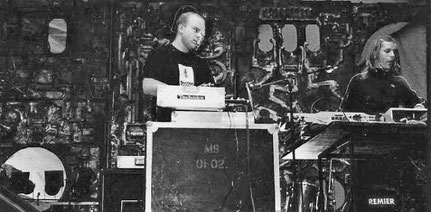
The Notebook
a feature film by János Szász
Design, animation plan
The Necromancer
a film plan by Árpád Bogdán
Concept art



Theatre
Bonnie Clyde
set design and graphics
Lear


Pleasure...

Cupido



Opium - Diary of a Madwoman
a feature film by János Szász, 2007
Production design Tibor Lázár
Art direction, Concept: Géza Szöllősi
The movie Opium is set in a mental institution and it is about an affair between a morphine addict doctor and one of his patients. My task was to design machinery that
could have possibly been used by doctors to assess and cure mental diseases in the 1912 in a women’s asylum. They wanted me to make devices that seem authentic yet fictional to give the movie a
dark atmosphere.
For example there was this scene in the script were Gizella, the main character, a mad women who is claimed to be possessed by the devil gets a “cold water treatment.” Out of a hoist a tank and a straight jacket I made a machine that the doctor uses to calm down the hysterical patient. I wanted to create something heavy. A visual, which seemed medically and historically accurate but was still fictional enough. Looking back at the machineries of the ‘20s, it looks staged since technology developed so fast in the past 80 years. The equipment I described previously was a fusion of the ideas of Henry Houdini, the famous escape artist’s water torture tank and the Japanese bondage. Beside the fact that it looks real, the objects also have an effect on the viewer’s subconscious. It puts more emphasis on the fact that psychology and technology was so backward in those days compared to how it is now and that people believed that insanity was a curable disease of the brain instead of what it truly is. Moral treatment was the most popular form of therapy. Patients were tortured and that sadistic view is also hidden in the objects.
General measurement board for women
Géza Szöllősi is 29 and graduated in Visual Communication from the Moholy Nagy University of Art in 2005. Opium, a film featured at the 38th Hungarian Film Festival, is his second motion
picture—following Taxidermia—where he worked under a unique title: special art designer.
As an artist independent of the rest of the crew, he contributed to the production with his own products and creativity. Those patient enough and who take a closer look may witness a cocktail rarely seen: moments of humor (of the dark variety), sex, birth, death, love, and loneliness.
filmhu: How did your filming career start?
Géza Szöllősi: I have only really invented this profession, special art designer, after Taxidermia. Or the producer came up with it because we were having problems with what to
put on the credits. I thought that it would be good, since there was no such actual profession. The special art designer is responsible for the transformation, design, and production of objects,
existing or imaginary. While working on Taxidermia I did not really know what my role was exactly, and neither did the crew, we only talked about it with Pálfi. On several occasions I had to go
as low as to rummage around in intestines because the arrangement of intestines does indeed require a degree in arts. Co-operation with János Szász went very well, I was able to approach him
saying ”I am the special art designer.”
filmhu: How did you and János Szász meet?
Sz: He saw Taxidermia and that's how. He could see something in the designs of Taxidermia that he needed to detach his film from reality. For a set in a lunatic asylum you can find the original pictures, the original instruments, you can duplicate them, but what if you want more than that? An example: cold water treatment
We talked about a scale in the first days of working together: reality was zero, Planet of the Apes was ten. We agreed on five. I was working on the designs, and I knew exactly where I was on the scale. When I gave him the finished material he chose the fives, not any of the stronger or lighter ones, and from that time forward I knew that we would be able to work together. filmhu:Were you more restricted than in Taxidermia? Sz: I was never really restricted. Changes in certain details were discussed occasionally. With Pálfi we had a year and a half between the first meeting to shooting, but with Szász everything happened very quickly, we had very little time. filmhu: What was your actual role in making the film? Sz: An example: there was a part in the script that said 'cold water treatment'. The end product of it was the instrument you can see at the beginning of the film. We built it from a fish tank, a hoist, and the mixture of a corset and a straitjacket. filmhu: Sometimes I had the feeling the instruments had the air of sadist and masochist culture about them. Sz: Yes, that is part of the function of the objects. The instrument featured at the beginning of the film, the 'hydro-set', is based on two motifs: one is Houdini's tank, the other is Japanese 'bondage'. The fusion and functionality of the two things is valid insomuch that hot and cold water treatments were used in the past. filmhu:
Are you going to work on films in the future, are there any prospects on the horizon? Sz: I am a bit disappointed because this time last year I was already working on Opium, but I do not have any actual invitations to projects. There are very few films in Hungary, and even less that need a contributor like myself. filmhu: Of the many areas where you have endeavored which is the dearest to you? Sz: I can no longer enjoy photography and films that much. But objects and sculptures are there with you in three dimensions while you look at them. However strange or contradictory they might be, they exist and you have to accept their existence.
Filmhu, February. 15. 2007.

Szabó Dénes: Szerepjáték tárgyakkal
Már három magyar filmben (Taxidermia, Ópium – Egy elmebeteg nő naplója, A nagy füzet) is dolgoztál mint dizájner. A filmes megbízásaid során előnyt vagy hátrányt jelent, hogy képzőművésznek
tanultál?
Valójában mindkettőt. De nekem egy filmes munka inkább egy „kirándulás” a művészet területéről a mozi világába, és nem létszükséglet, mint más tervezőknek. Nekik minden napjuk erről szól. Az egyik forgatáson még egy tizenhatodik században játszódó olasz történelmi filmben dolgoznak, majd máskor egy kortárs történethez keresnek díszletet. Én örülök, ha adódik egy filmes lehetőség, de ha épp nem akad, nem kezdek el kapálózni érte.
Mióta dolgozol együtt Szász János rendezővel és hogyan kerültél kapcsolatba vele?
Amikor János az Ópiumot készítette elő, gondolta, hogy szüksége lesz Lázár Tibor díszlettervező mellé egy olyan szakemberre is, aki máshonnan jön, és más szemmel dolgozik. Aki még a látványon alakíthat, és különös tárgyak, szerkezetek létrehozásával hozzáadhat valami pluszt a film hangulatához. Az Ópium óta Jánossal rendszeresen együtt dolgozunk, a legújabb közös munkánk, A nagy füzet már a hetedik Szász-alkotás, amelyben részt vehettem, mivel a színházi darabjaiban is segítem őt. János mindig hív és számít rám, ha az adott munkájához passzol a vizuális világom.
Dizájnerként mi volt a feladatod A nagy füzetben? Te írtad tele a lapokat?
A füzetbe nem én írtam, az Szász-Benczúr Zsuzsa kalligráfus feladata volt. Ő imitálta a filmben szereplő ikerpár írásmódját és ugyancsak ő írta tele az Ópiumban az elmebeteg főszereplőnő naplóit is. A nagy füzetben nekem a fontosabb jelenetekhez kellett a kollázsokat elkészítenem a már megírt szöveges oldalakra. Szász János ragaszkodott hozzá, hogy Agota Kristof teljes kisregényét elkészítsük. Korabeli újságokból, fotókból vágtam ki részleteket, melyekre aztán ráfestettem, belerajzoltam, de növényekkel és bogarakkal is kidekoráltam őket. Olyan hozzáálással dolgoztam, mint egy gyerek, persze azért művészi megformálással.
Amikor filmekhez készítesz dizájnt, tárgyakat, akkor mi a munkamódszered?
Egy filmszereplő tárgyi környezetének megtervezésekor, belehelyezkedem a szerepbe. Ilyenkor én is olyan vagyok mint egy színész, annyi különbséggel, hogy én nem a testemmel vagy a hangommal dolgozom, hanem az elkészített tárgyakkal adok hozzá a szereplő karakteréhez. Az Ópiumban például az intézet igazgatója, Moravcsik szerepébe bújtam bele, és elképzeltem, hogy milyen mérőeszközei, orvosi szerkezetei lehettek. Így született meg pl. „vizes terápia szett”, mellyel Gizellát a főorvos egy vízzel teli akváriumba meríti, méghozzá megalázó helyzetben. A tervezéskor a kortárs Houdini akváriumát és a mai japán szadomazo kötözési kultúrát ötvöztem.
Előfordult már, hogy valamelyik filmes munkád hatott a képzőművészetedre?
Persze, mivel bizonyos szempontból lusta vagyok. Ha filmes munkával bíznak meg, akkor azzal az elánnal alkotom meg a tárgyakat, mintha magamnak csinálnám őket. A nagy füzet például arra ösztönzött, hogy ne csak digitális montázsokat készítsek, hanem térjek vissza a hagyományos, manuális technikához. De előfordul az is, hogy egy filmes tárgyat kiállítok mint kortárs installációt. Így került az Ópium egyik egészalakos orvosi lelet-együtese egy galériába. A Taxidermiát követően pedig több groteszk állatpreparátumot is készítettem.
Utóbbiak között volt már gömb alakú tehénfej vagy egy disznó, melynek hasából kolbászok ágaztak ki. De állathúsból készítettél már emberi portrékat, szexuális témájú műveket is. Számos kritika ér?
Ha egy képzőművész a horror és a pornográfia területén lavírozik, azt azonnal a személyére vetítik. Ha ugyanezt teszi egy filmrendező, akkor senki sem gondolja róla, hogy "olyan" furcsa ember lehet. Nem is értem, hogy a hús-szobraim miért botránkoztatják meg a befogadót, mert ma már a tömegmédia még szörnyűbb képeket operál.
Filmvilág, 2013
Backstage
Márió Nemes Z.: Meters
The gynometer has broken down, the staff
is dancing perplexed with chocolate in hands.
It happens even in the best family that
measure is dead, but what about the festival
tomorrow? Fortunately the andrometer is still
working, so it is brought out from the brown
room, and one by one they come, the subjects. First
they are dressed in mothers’ clothes, then into something
bloody. The andrometer is making a feverish din as if
looking forward to the brown ball when the measured girl
would be spinning to the rhythm of the merry-go-round.
*
Gynometer and andrometer make friends
when there is a blackout. (One makes cold,
the other heat.) Then they hate each other
again, and on the floor of the measuring room
the axis is soaking in pitch.
*
At times they let animals in
to see if the gynometer can meet
the demands, but the andrometer is faster
and measures three pigs right away.
The gynometer doesn’t cry, though cracks a lot,
the depth of the night has broken! Swine eat
swine.
*
Fresh lubricant is brought
from the grease garden. The andrometer
is shrieking haughtily. The voluble folks,
they slush it well. (Stacks are burning nearby,
but this is the festival already.) The gynometer
is watching the treatment in silence, and remembers
how she loathed being a distaff.
*
The last subject runs out to the yard.
It doesn’t matter what substance they have
since fermentation is absolute, forma-
lin has been drunk by the staff. The meters,
out of order, wait for the end of the celebration,
and being bored they make
children, so that next time the
little ones can also join in.
The basis of our well-being is energy,
and the night is but bauxite.
Géza Szöllősi is a skilled multi-disciplinary artist working in a wide variety of mediums including taxidermy, animal flesh, photography and graphics. He worked as designer in several award-winning Hungarian films like Opium and The Notebook and Taxidermia.
Géza's artworks has been exhibited alongside artists such as Jake and Dinos Chapman, Jeff Koons, Cindy Sherman in the 'Decadence Now! Visions of Excess' organised by Galerie Rudolfinum, Prague. His work is held in collections in Miami, New York, Seoul, London, Prague and Budapest.





























































